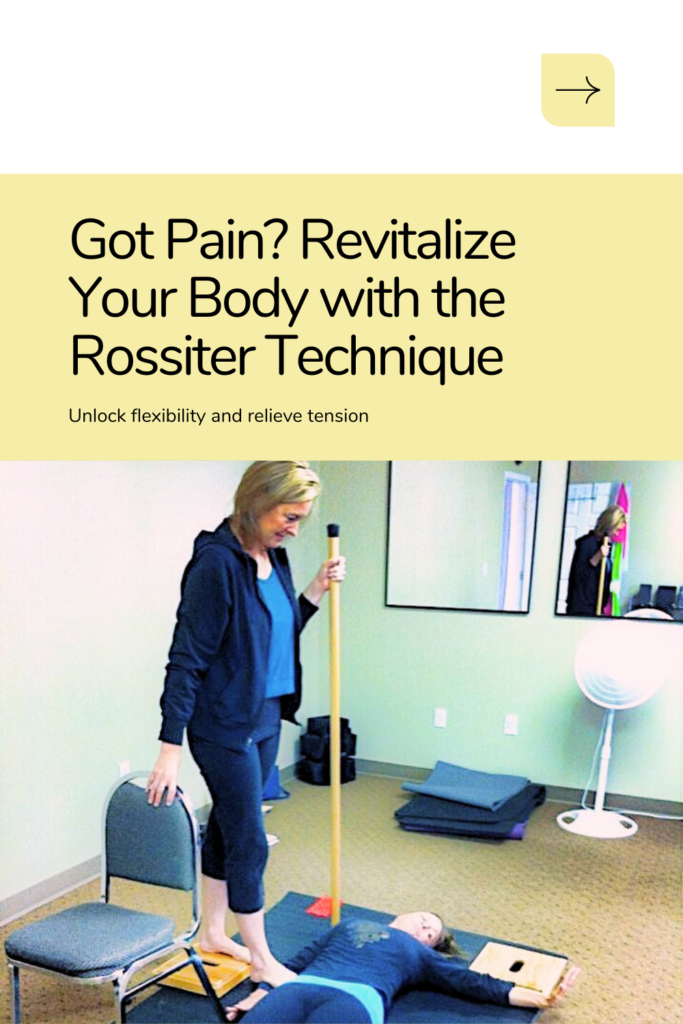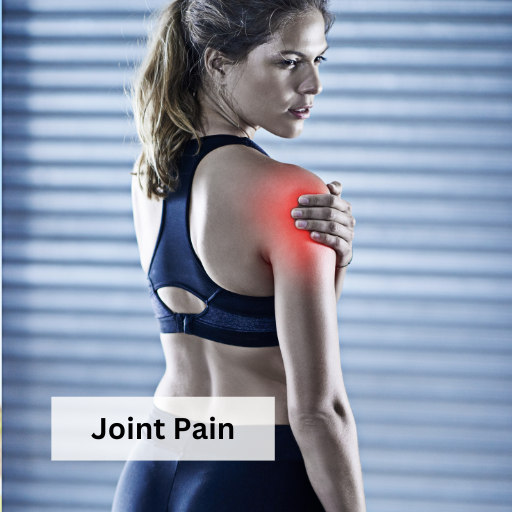
Many have turned to various techniques and therapies in the quest for effective pain relief and enhanced physical well-being. One such technique that has garnered significant attention is the Rossiter Stretching Technique. With its unique approach to addressing pain and mobility issues, Rossiter Stretching has helped countless individuals improve their quality of life. In this comprehensive guide, we’ll explore what Rossiter Stretching is, its benefits, the types of issues it can help with, and the fascinating history and development of this technique. As a Rossiter coach with over ten years of experience, I’ll share insights from my practice at Strong Tower Pilates Studio in Acworth, GA, where I offer private Rossiter sessions and teach Pilates.
What is the Rossiter Stretching Technique?
The Rossiter Stretching Technique, often referred to as Rossiter, is a powerful and effective method of stretching and pain relief developed by Richard Rossiter. Unlike traditional stretching methods, Rossiter focuses on the body’s connective tissue, aka fascia, to address pain and mobility issues. This two-person technique involves a series of specific stretches while a Rossiter coach anchors the tissue using their hands or feet. The client actively participates in the “workout,” and results are usually profound and instantaneous.
Understanding Fascia
To fully grasp the effectiveness of Rossiter Stretching, it’s essential to understand what fascia is and its role in the body. Fascia is a continuous web of connective tissue that surrounds and supports muscles, bones, and organs. It plays a critical role in maintaining structural integrity, enabling movement, and providing a pathway for nerves and blood vessels. When fascia becomes tight, restricted, or damaged, it can lead to pain, reduced mobility, and other issues.
The History of the Rossiter Stretching Technique
Richard Rossiter, a pioneer in connective tissue therapy, founded the Rossiter Stretching Technique. His journey began in the 1980s when he was a U.S. Army helicopter pilot suffering from chronic pain. Frustrated with conventional treatments that offered little relief, he embarked on a quest to find a solution. Drawing on his background in Rolfing (a form of deep tissue manipulation) and his understanding of fascia, Rossiter developed a unique approach to pain relief that focused on stretching and releasing the body’s connective tissue.
Rossiter’s innovative method quickly gained recognition for its effectiveness, and he began teaching others how to use this technique. Today, the Rossiter Stretching Technique is practiced by trained coaches worldwide, helping individuals significantly improve pain relief and mobility.
The Benefits of the Rossiter Stretching Technique
Rossiter Stretching offers a wide range of benefits, making it a valuable tool for anyone seeking relief from pain and improved physical function. Some of the key benefits include:
- Pain Relief: Rossiter Stretching is highly effective in alleviating various types of pain, including chronic pain, acute pain, and pain resulting from injuries or overuse. Targeting the fascia helps release tension and restrictions that contribute to pain.
- Improved Mobility: Tight and restricted fascia can limit movement and flexibility. Rossiter Stretching helps to restore normal fascial function, leading to increased mobility and range of motion.
- Enhanced Athletic Performance: Athletes and active individuals often use Rossiter Stretching to improve performance and prevent injuries. The technique helps maintain optimal muscle and joint function, improving athletic performance.
- Faster Recovery: Whether recovering from surgery, injury, or intense physical activity, Rossiter Stretching can accelerate the healing process by promoting better circulation and reducing tissue tension.
- Overall Well-being: Beyond pain relief and physical benefits, many individuals report a sense of improved well-being and relaxation after Rossiter sessions. The technique can help reduce stress and improve mental clarity.

Issues that Rossiter Stretching Can Help With
Rossiter Stretching is versatile and is used to help with various issues. Some of the common problems it can help address include:
- Back Pain: Whether due to muscle strain, poor posture, or other factors, Rossiter Stretching can effectively alleviate back pain.
- Neck and Shoulder Pain: Tightness and restrictions in the neck and shoulder area are common complaints that respond well to Rossiter Stretching.
- Joint Pain: Pain in the knees, hips, elbows, and other joints can be relieved through targeted fascia stretching.
- Muscle Tension: Chronic muscle tension, often caused by stress or repetitive motions, can be reduced with Rossiter Stretching.
- Injuries: Rossiter Stretching can aid in the recovery and rehabilitation of various injuries, including sprains, strains, and overuse injuries.
- Headaches and Migraines: By addressing tension and restrictions in the neck and shoulders, Rossiter Stretching can help reduce the frequency and severity of headaches and migraines.
- Plantar Fasciitis: This common foot condition, characterized by pain in the heel and bottom of the foot, can be effectively managed with Rossiter Stretching.
Related Read: Toe Cramps In Pilates? Your Ultimate Guide to Prevention
My Experience as a Rossiter Coach
As a Rossiter coach with nearly ten years of experience, I have seen firsthand the transformative effects of this technique on my clients. At Strong Tower Pilates Studio in Acworth, GA, I offer private Rossiter sessions tailored to each individual’s needs. My background in nursing and Pilates complements my Rossiter practice, allowing me to provide a holistic approach to pain relief and physical wellness.
In my practice, I emphasize the importance of active participation from clients. Rossiter Stretching is not a passive treatment; it requires clients to engage and actively stretch their fascia under my guidance. This collaborative approach ensures that the stretches are effective and targeted to the areas needing attention.
A Typical Rossiter Session
A typical Rossiter session begins with thoroughly assessing the client’s condition and specific concerns. Based on this assessment, I develop a customized stretching plan that targets the affected areas. During the session, I guide the client through stretches, providing support and feedback to ensure proper technique.
Clients often notice immediate improvements in pain and mobility after just one session. However, I recommend a series of sessions for long-term relief and optimal results. Each session builds on the progress made in previous ones, gradually releasing fascia restrictions and restoring normal function.

Why Choose the Rossiter Stretching Technique?
With so many pain relief and stretching techniques available, what sets Rossiter Stretching apart? Here are a few reasons why Rossiter is a preferred choice for many:
- Effectiveness: Rossiter Stretching has a proven track record of delivering fast and lasting pain relief. Many clients experience significant improvements after just a few sessions.
- Active Participation: Unlike passive treatments, Rossiter requires clients to engage in the process actively. Rossiter techniques enhance the stretches’ effectiveness and empower clients to take control of their pain and well-being.
- Holistic Approach: Rossiter Stretching addresses the root cause of pain by targeting the fascia. This holistic approach ensures comprehensive and long-lasting results.
- Personalized Care: Each Rossiter session is tailored to individual needs and concerns. This customized approach ensures that clients receive the most effective and relevant treatment.
- Complementary to Other Therapies: Rossiter Stretching can be used alongside other therapies, such as Pilates, massage, and physical therapy, to enhance overall outcomes and provide a well-rounded approach to pain relief.
In Summary
The Rossiter Stretching Technique is a powerful and effective method for relieving pain, improving mobility, and enhancing overall well-being. Developed by Richard Rossiter and refined over the years, this technique has helped countless individuals significantly improve their physical health. As a Rossiter coach with over a decade of experience, I am passionate about helping my clients find relief from pain and achieve their wellness goals.
If you’re struggling with pain or mobility issues, consider trying Rossiter Stretch Therapy. At Strong Tower Pilates Studio in Acworth, GA, I offer private Rossiter sessions tailored to your specific needs. Whether you’re dealing with chronic pain, recovering from an injury, or simply looking to improve your overall physical function, Rossiter Stretching can be a valuable tool on your journey to better health. Rossiter Stretching can be a valuable tool on your journey to better health.
Not local to Acworth, GA? Find a Rossiter Coach near you HERE.
Pin It For Later


[…] Related Read: Discover the Rossiter Stretching Technique: A Path to Pain Relief […]